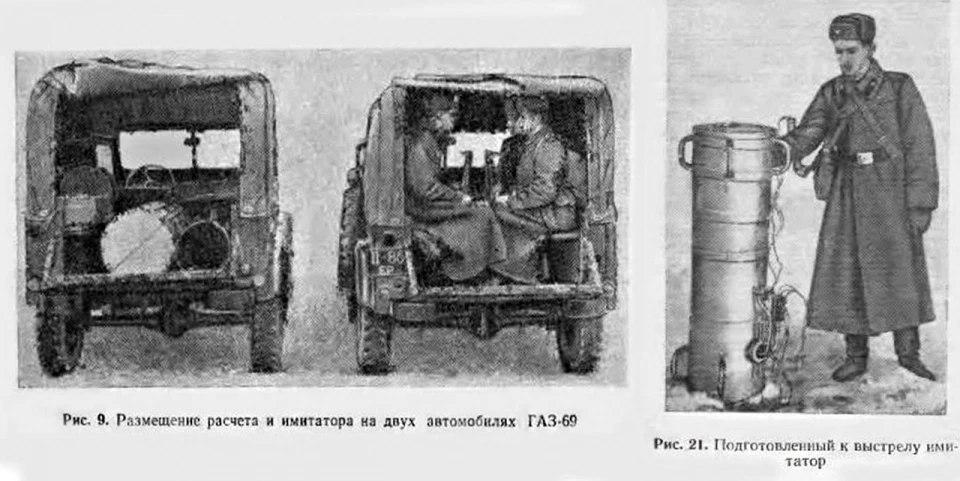
Simulating nuclear war: what does the Kremlin threat mean?
Along with reports of escalating hostilities in Ukraine, Russia announces it has a nuclear bomb simulation technique and plans military exercises using this "nuclear war simulation technology"
Espreso explains what technologies are involved, what a nuclear explosion simulation looks like, and why Russian troops need them.
The text covers the following:
- What is a nuclear explosion simulation?
- What does a nuclear explosion simulation look like?
- How dangerous is a nuclear explosion simulation?
- What do Western media report about a nuclear explosion simulation?
What is a nuclear explosion simulation?
The Russian propaganda agency TASS reported on the development of nuclear weapons imitation by the St. Petersburg Khrulev Military Academy.
"The new simulator of a ground nuclear explosion will allow to enhance training of ground troops for combat operations involving nuclear weapons," Russian propagandists write.
Experts from the Bulgarian Military portal believe that this technology can simulate almost all aspects of a nuclear bomb detonation, with the exception of radioactive radiation. They emphasize that the technical details of this development remain unknown to the general public. What is clear is that the simulation is based on Soviet-era designs, i.e., the IU-59 and IAB-500 bombs.
“It’s important to clarify a point – yes, the Russians do indeed possess Soviet nuclear explosion simulators. These serve as a harmless method for the Kremlin to flaunt its nuclear capability without resorting to the infamous 'red button.' Consequently, one might argue that the Russians see substantial promise in this approach,” the article says.
What does a nuclear explosion simulation look like?
"To be more specific, the nuclear explosion simulator should depict all the physical effects of a 'real' nuclear weapon detonation - intense light radiation, a strong blast wave, and of course, the simulation of the so-called 'atomic mushroom,'" Defense Express writes.
Russia indeed possesses two types of nuclear explosion simulators that originated in the USSR: the IAB-500 and the IU-59. In 2020, a video showcasing the ejection of the IAB-500 from a Su-30SM aircraft was made public.
The IAB-500 is an imitation of a specific nuclear bomb for tactical aviation, the RN-24. The "500" itself is a large bomb-shaped tank filled with a mixture of liquid fuel (75% diesel and 25% jet fuel) and red phosphorus cylinders, Defense Express explains.
"According to the passport characteristics, the IAB-500, when detonated, should produce a fire sphere with a diameter of 90-120 meters, which glows for 3.5 seconds; and should produce a 'mushroom' up to 1 kilometer high, which should be visible up to 30 kilometers," the article says.
How dangerous is a nuclear explosion simulation?
Another nuclear weapons simulator is the IU-59. Military experts call it a "huge TNT bomb," 1.1 meters high and weighing 117 kilograms. The IU-59 was supposed to be fired from a special 1.4-meter-high mortar with an electric fuse. To prepare the explosion, a team of 4 people and 25 minutes were required. The safe distance for detonation was 200 meters.
 Photo: IU-59, archive image from open sources
Photo: IU-59, archive image from open sources
Military expert Valeriy Riabykh emphasized on Espreso TV that the nuclear explosion simulator is an outdated technology from the Soviet era. This suggests that Russia may have lost access to more modern technologies, depleting its once extensive reserves, and reverting to old blueprints.
"The words 'nuclear explosion simulator' are very scary here. But in reality, this is just a training tool. The enemy uses this news in two ways. First of all, of course, for the purpose of informational influence that Russia is preparing for a nuclear confrontation. And secondly, that they are capable of producing such a device. It should be noted that everyone who studied at least in military schools during the Soviet era went through training using similar means. There is nothing special here," Riabykh said.
According to him, such a device can be easily made on the basis of diesel fuel, kerosene, and phosphorus. The main goal is to simulate a nuclear explosion to practice the units' actions in the conditions of using nuclear weapons in exercises.
At the same time, the example of the IAB-500 and IU-59 shows that Russians do not need sophisticated technology or scarce substances to create a nuclear explosion simulator. Therefore, the Ukrainian Defense Forces need to keep in mind that strong flashes and mushroom clouds may appear near the contact line, just like in a nuclear explosion.
What do Western media report about a nuclear explosion simulation?
The Mirror, which also published a story on Russian developments in simulating a nuclear explosion, believes that this is a significant step towards nuclear escalation by the Kremlin. British journalists cite the International Institute for Strategic Studies, which warns of Russia's potential readiness to deploy tactical nuclear weapons.
"A particularly troubling trend from a Western perspective is Russia’s belief in its ability to achieve and maintain dominance in an escalating environment, and to compensate for losses of personnel and equipment to a degree unimaginable to the West,“ the report says.
The report also cites the example of Russian deployment of nuclear weapons in Belarus as “a useful tool to exert further control over its near-abroad and increase its coercive power against NATO.”
The Mirror writes that Putin has deliberately refused to ratify the Comprehensive Nuclear Test Ban Treaty and plans to resume testing an atomic bomb in the Arctic. He is allegedly confident that by rattling weapons of mass destruction he can induce the West to peace on the Kremlin's terms.
- News











































